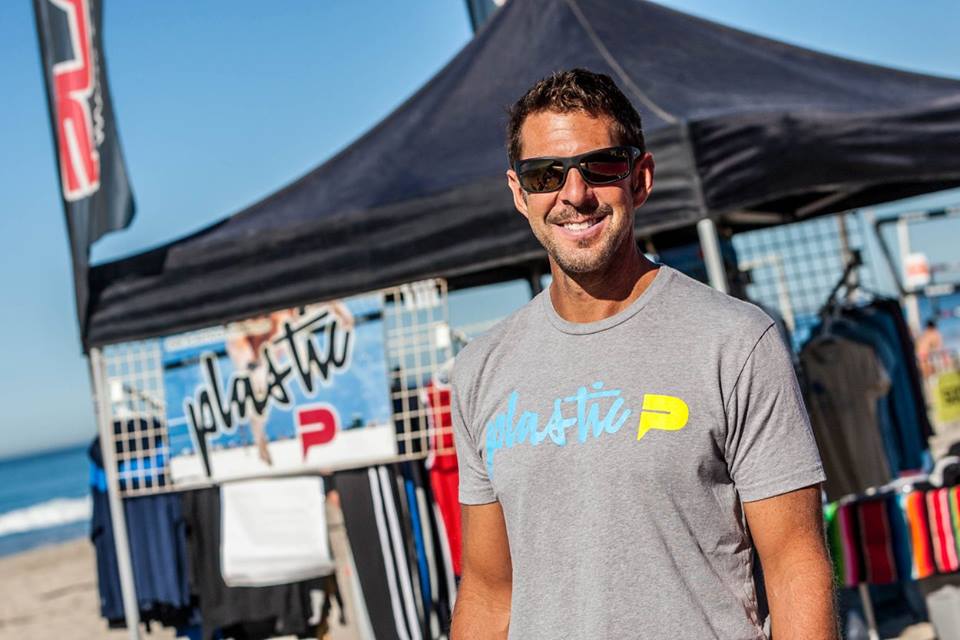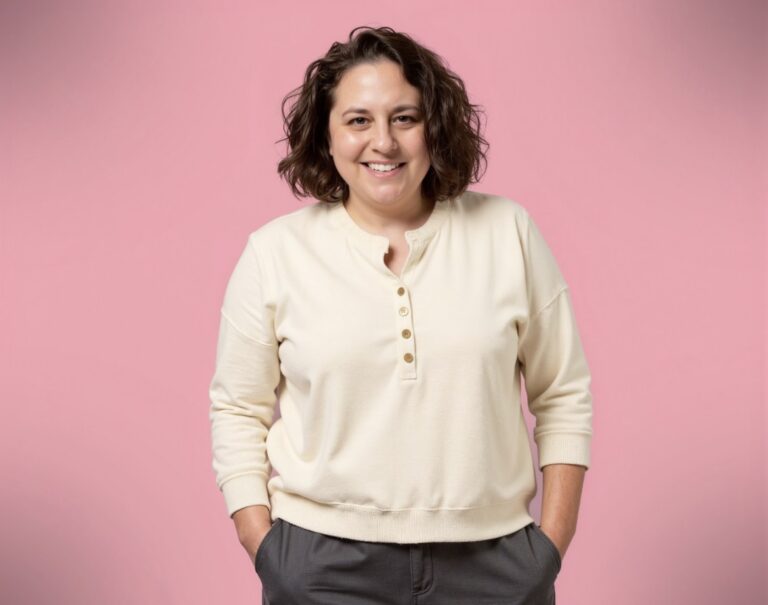We’re excited to introduce you to the always interesting and insightful Becca Purtell. We hope you’ll enjoy our conversation with Becca below.
Hi Becca , really happy you were able to join us today and we’re looking forward to sharing your story and insights with our readers. Let’s start with the heart of it all – purpose. How did you find your purpose?
Stepping back and looking at what I wanted in my day-to-day life is what helped to birth my sense of purpose. I enjoy traveling, teaching yoga, and exercising outside (rock climbing & backcountry skiing) and it became clear that these activities needed to hold more of a presence in my life. I decided I wanted to establish my own type of experience that allowed me to balance work, daily movement, and community on a regular basis.
When I first stepped into the world of freelancing, I did not have experience working as an independent contractor. I had typically always worked for companies where I was given a lot of direction and was not used to being in the position of directing and deciding what work and projects I wanted to take on. While I enjoyed the community aspect of working for a company, I desired more freedom and flexibility in my day-to-day routine.
As a yoga teacher, I often use the phrase “getting the wiggles out” and it’s a phrase that implies the need for physical movement before you can settle into a more still state. I am incredibly grateful to live in Boulder, Colorado and this is a major hub for all things outdoor related. My favorite type of work day involves early morning climbing, working at my laptop by 10 am and a home cooked meal later that night. I’ve noticed that when I allow myself this freedom, it creates a stronger sense of fulfillment and establishes a deeper level of focus for my projects. Exploring a lifestyle that is different everyday keeps me on my toes and makes me excited for what the next day holds.
By living my purpose, I’m constantly exposed to a variety of different terrain, landscapes, rock formations, soils, and plant material. Traveling around the world and experiencing landscapes in different settings is an essential part of being a designer. I’ve been fortunate to visit countries like Morocco, Spain, Guatemala, Mexico, Greece, China, the list goes on!
From my travels, I draw inspiration from new places by observing materials, texture, color, form, scale, and composition. It’s exciting to learn about new plants and what grows in tropical locations such as El Salvador versus a dry and colder climate like Colorado. As most architects and landscape architects would probably agree, we tend to get “stuck” behind the computer. I’ve realized that a huge part of being a landscape architect is exploring and celebrating these landscapes that we learn so much about.


Thanks, so before we move on maybe you can share a bit more about yourself?
I’ve found that I very much enjoy working in the multi-family realm.
I have worked on a range of project types, from residential to commercial and multi-family residential, and have been fortunate to work on projects in Colorado, Texas, New Mexico, New Jersey, and Florida.
Working in different climates has molded and shaped me into the designer that I am today. Depending on project location, some examples of things I consider when working on a project include drought tolerance for planting, proximity to ocean (salt tolerance), sun exposure, wind load conditions (on rooftop projects), freeze/thaw, and slope.
Most of these projects include a swimming pool amenity area that not only incorporates a pool, but also includes BBQ grill & dining areas, cabanas, pickle ball & bocce ball courts, tv wall areas, etc. It’s exciting to explore the unique possibilities of pool design that vary from a standard, rectangular shape. Typical pool design can be elevated by integrating features like lounge ledges, lighting, and raised spas & Jacuzzis.
As a designer, what feels the most interesting about these projects to me is the complexity and relation of everything working together. As is typical in design, rarely is the first thing you sketch out what actually gets built. There are many factors that affect landscape architecture such as building architecture, civil engineer grading and stormwater, and probably most important, client budget and changes.
I enjoy looking at the entire project and understanding how changes to one part of your design (even if they seem small) affect how other parts of the design are working. As a landscape architect, I am not only focused on the plant palette, but also focused on how all of the hardscape materials (concrete, wood, stone) work together, how the site is relating and responding to nearby communities, what (if any) trees are existing on site, what the local climate is like, what maintenance capabilities exist, who will be using the space, etc. In good design, every aspect of a landscape plan is related and it’s fun to problem solve and work through changes that inevitably come up.
Through thoughtful selection of plants and materials, we can gain an understanding and appreciation for the built environment. Palette and composition guide and develop not only the spaces we occupy, but the spaces we celebrate. Being a landscape architect requires having the ability to focus on the fine details while also taking a step back to look at the project as a whole.
Similarly to yoga, these landscape designs are based on creating space for community. With every project that I work on, my goal is to create sustainable design solutions that respond to community context and client desires.


Looking back, what do you think were the three qualities, skills, or areas of knowledge that were most impactful in your journey? What advice do you have for folks who are early in their journey in terms of how they can best develop or improve on these?
Three traits that I’ve found to be most impactful in my journey as a freelance landscape architect are flexibility, having a passion for growth and improvement, and dedication.
1. Flexibility – One of the tough things about freelancing is that you’re never really “off the clock” and when you work remotely, you may be working with clients in different time zones. I live on Mountain time but often adjust my schedule to work with clients on their time zones. My goal is to make the overall freelance process easy for my clients and when you are willing to adapt your schedule, that is always appreciated and valued.
Additionally, being flexible with time has helped me be more efficient. I work when I’m busy and if I’m waiting on work, I step away from my desk and do something else. This keeps me motivated so that when I sit back down, I’m energized and ready to work. Also, working a few hours on a Sunday so you have a better Monday can help…but I try not to do that too much because I value creating work-life balance.
2. Passion for Growth & Improvement – For years, I had pushed off working towards my Landscape Architect Licensure because I did not feel a sense of purpose with pursing that title. In addition to the practical experience component, you are required to pass (4) tests in order to acquire your license (in Colorado). I decided that I needed to create a schedule and timeline for myself in order to achieve this goal. When I started my own business, I realized that this knowledge base and title would be necessary if I wanted to be successful as a business owner.
For two years (Monday-Friday), I woke up around 5:30 am, walked to the coffee shop, studied for an hour or two, and worked on my freelance projects for the rest of the day. I also signed up for review classes on the weekends in preparation for my exams. Having a sense of purpose inspired me to learn as much as I could during this time. By being curious and asking a lot of questions, I expanded my knowledge and improved my confidence as a landscape architect. With this new title, I was able to raise my hourly rate and charge more for my services.
3. Dedication – Flexibility and passion for growth are part of what I consider the most important trait, dedication. To succeed as a freelancer, you have to be dedicated to what you do. Otherwise, why would you do it? That means pulling your computer out to answer a few emails before you get on a long flight; getting up at 5 am so you can get a few hours of work in before the Teams calls and emails start (vice versa with working at night); adjusting your work hours so you can work-travel in Morocco or Spain and take calls at 9 am in the U.S. Dedication builds a sense of resiliency, something that you ultimately need as a freelance landscape architect.
My advice for landscape designers and architects that are interested in exploring freelancing is to get curious, be willing to work really hard, and to seek mentorship and continued education opportunities. With freelancing, there are of course, a lot of lows, but there are also amazing highs and you have to be willing to ride that wave. Even though it has its tough moments, freelancing has molded me into the designer that I am today, and I wouldn’t trade it for anything.


How can folks who want to work with you connect?
Yes! I love creating community and I’m looking to connect with other freelance creatives. It’s essential to have connections with other design professionals, and I enjoy expanding my network.
I’m open to collaborating with designers, architects and contractors that are looking to build long term, working relationships. I’m also interested in working with residential clients that want to elevate and transform their homes.
If you would like to connect or collaborate on a project, please reach out to [email protected].
Contact Info:
- Website: https://beccapurtelldesign.com
- Instagram: https://www.instagram.com/beccapurtell/
- Linkedin: https://www.linkedin.com/in/becca-purtell


Image Credits
Headshot Credit – Marisa Franzese
so if you or someone you know deserves recognition please let us know here.




